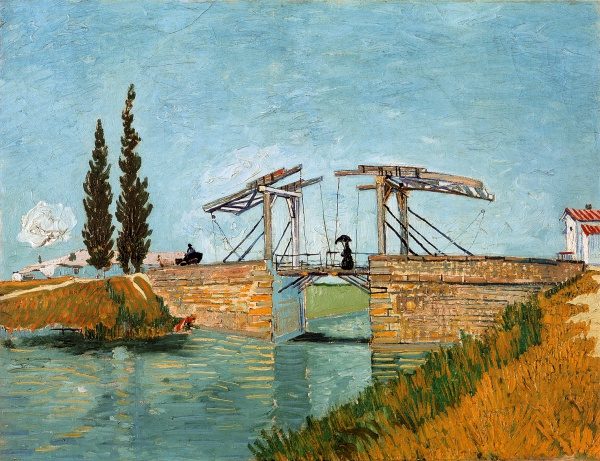Facts About The Langlois Bridge at Arles
When Vincent van Gogh moved to Arles, France, in 1888, he found a new muse in the Langlois Bridge. This drawbridge over the Arles to Bouc canal inspired a series of works, including four oil paintings, one watercolor, and four drawings. Van Gogh employed a perspective frame to determine the precise lines and angles, and the influence of Japanese woodcuts is evident in his simplified color palette, resulting in images that are both harmonious and vibrant.
The bridge and the surrounding countryside reminded Van Gogh of his homeland in the Netherlands, igniting a surge of creativity. During his time in Arles, he was exceptionally productive, creating numerous paintings, drawings, and letters. The Langlois Bridge, in particular, became a central motif in his work, reflecting his deep fascination with the structure through his meticulous attention to detail and composition.
The influence of Japanese art in these paintings is evident in Van Gogh's use of simplified colors and outlines that suggest movement. A standout piece, "The Langlois Bridge at Arles with Women Washing" highlights Van Gogh's mastery of color theory and composition. His technique of employing contrasting colors and thick layers of paint emphasizes light and reflection, demonstrating his talent for blending abstraction with natural elements.
The Langlois Bridge paintings are celebrated for their vibrant colors and harmonious unity. Critics and art enthusiasts have extensively analyzed them for their use of color, form, and the seamless integration of human activity within the natural landscape. Van Gogh's dedication to exploring the bridge from various angles and in different mediums—oil, watercolor, and drawings—underscores his commitment to capturing its essence.

 Poland
Poland